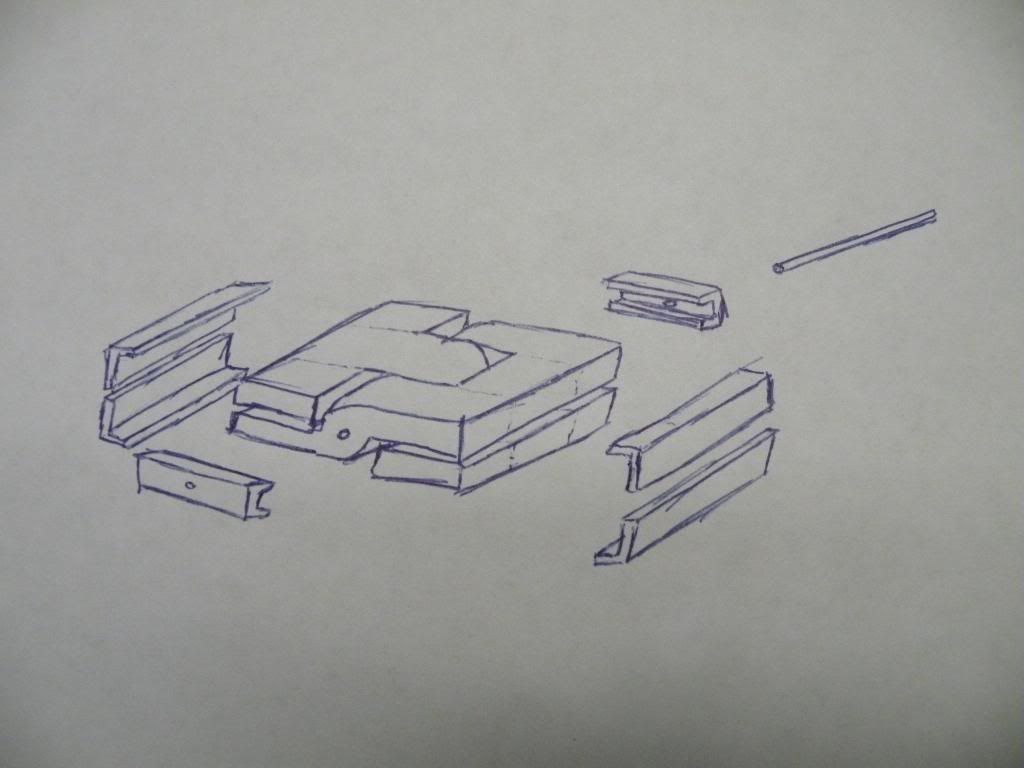So I was perusing the threads and someone mentioned they had tried and failed to make one of their X-wings articulated, with opening wings. Unfortunate for them, but it got me thinking about what would be required to make an articulated X-wing . . .
My mind came up with a design in ten seconds flat, patterned after a paper model I'd built once, and I went downstairs to my lair and started working. Before I got too far though, I figured someone might want to know how I did it, just in case they got the itch to try it themselves, or just wanted to see how crazy I could get. So I photographed every step and this is the result:
First, I detached the wings on one of my X-wings. I wanted to use one that I didn't mind destroying, just in case I royally screwed this up, so I went with one of the lesser-quality minis in my box. Then I hollowed out the wing mechanism section using a Dremel with a really tiny milling bit chucked in, making sure to square off the insides so the wings could reach all the way to the top:
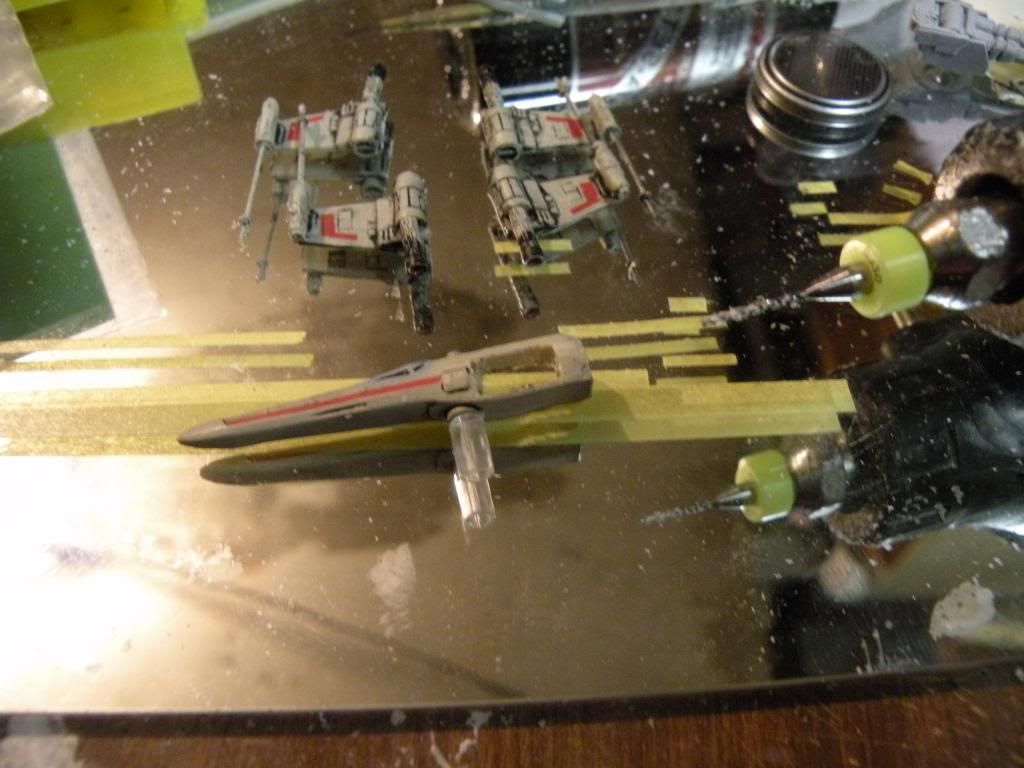
After that I set it aside to get started on the hinge. I took a piece of .080" square styrene stock from Evergreen Scale Models and cut it into three pieces of equal length, fitted to poke out about a millimeter from the fuselage on either side. Then I chucked in an even tinier milling bit into my Dremel and drilled out holes for the steel wire I would be using for the axle:

I then mounted them in a hand vise and cut grooves in their edges. The reason for this will become apparent later:
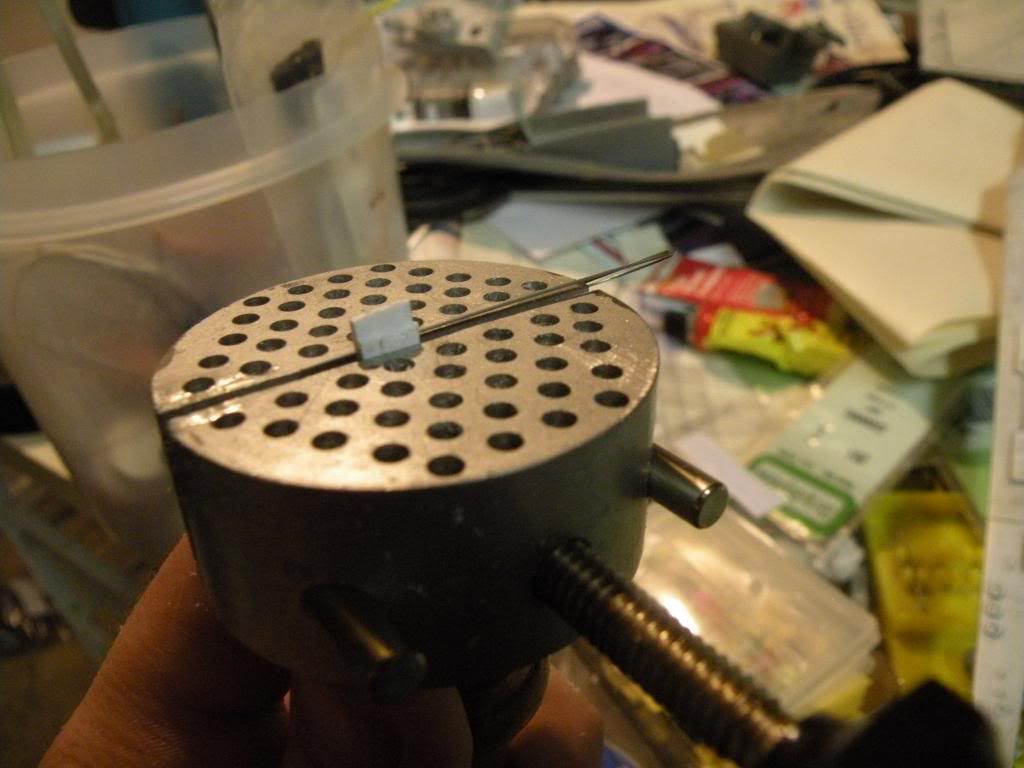
After I finished that and cleaned up the edges, I mounted the hinge parts on the wire, alternating them:

I then cut six small rectangles out of the square stock and glued them on the hinge parts like so:
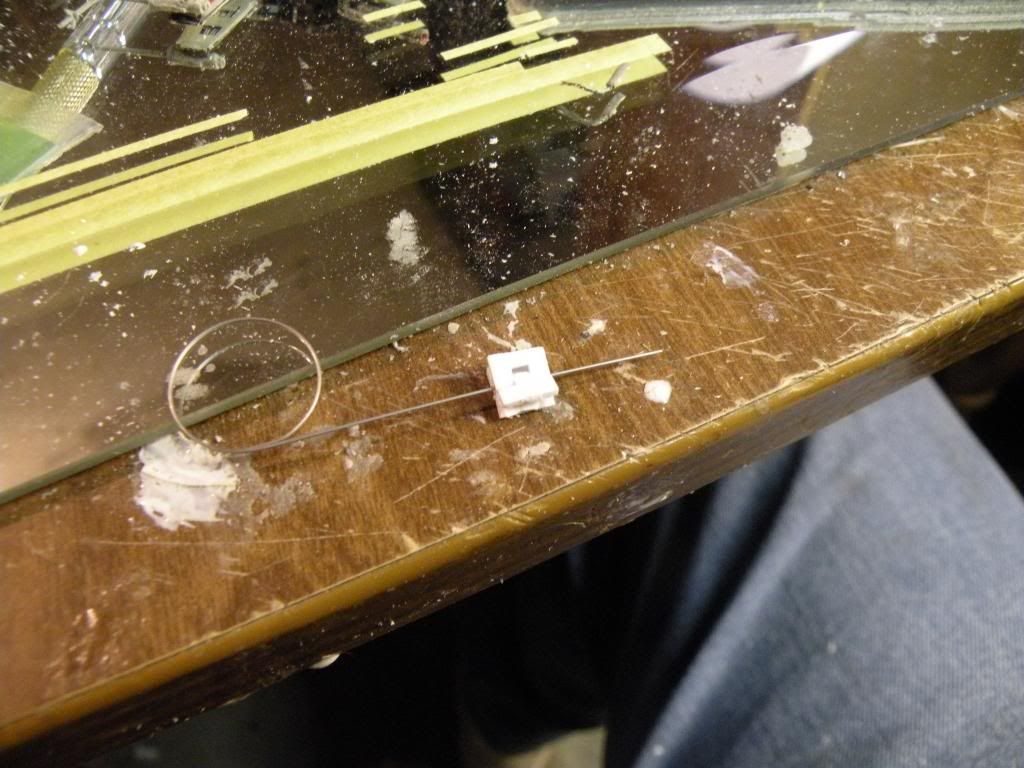
While the glue set on those parts I set them aside and got to work on the fuselage. First I found the centerline by tracing back from the lip along the nose, then drilled a hole the same size as my wire in the S-foil actuator box: http://i60.photobucket.com/albums/h4/Millennium_Falsehood/Articulated%20X-wing%20miniature/DSCN5745_zps34e45dc6.jpg
Then I took 0.060" C-channel, also from Evergreen, and cut two small sections and drilled holes in them. These were then glued inside the fuselage to give them some bite on the hinge. I aligned them by inserting the hinge wire through the back and through the C-channel, then superglued them in place: http://i60.photobucket.com/albums/h4/Millennium_Falsehood/Articulated%20X-wing%20miniature/DSCN5747_zps0375349a.jpg
Then I inserted the hinge and threaded the wire through it, making sure it interfaced with the hole in the front of the hinge area:
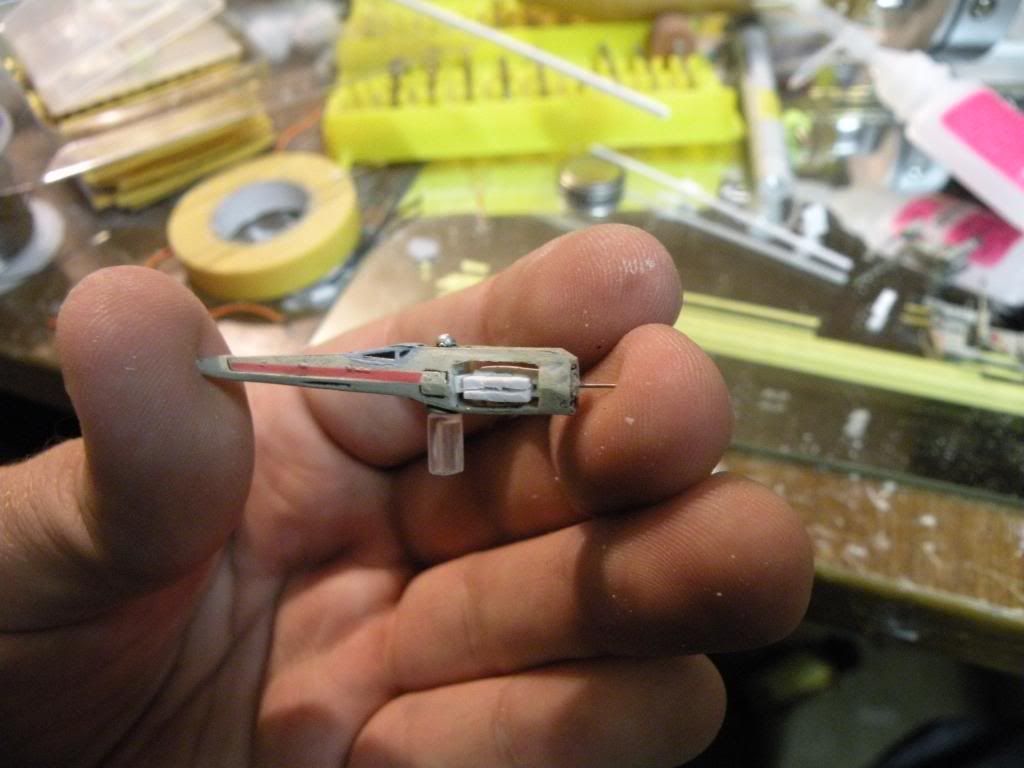
After that was secure I set it aside and began working on the wings. I sanded off the rough parts of each wing, then I cut four pieces of C-channel the same length as the width of the hinge box. Then I cut off one of the sides on each one in order to make a socket for the hinge. An L-shaped socket will give it a lot more durability than simply butt-gluing in in place:
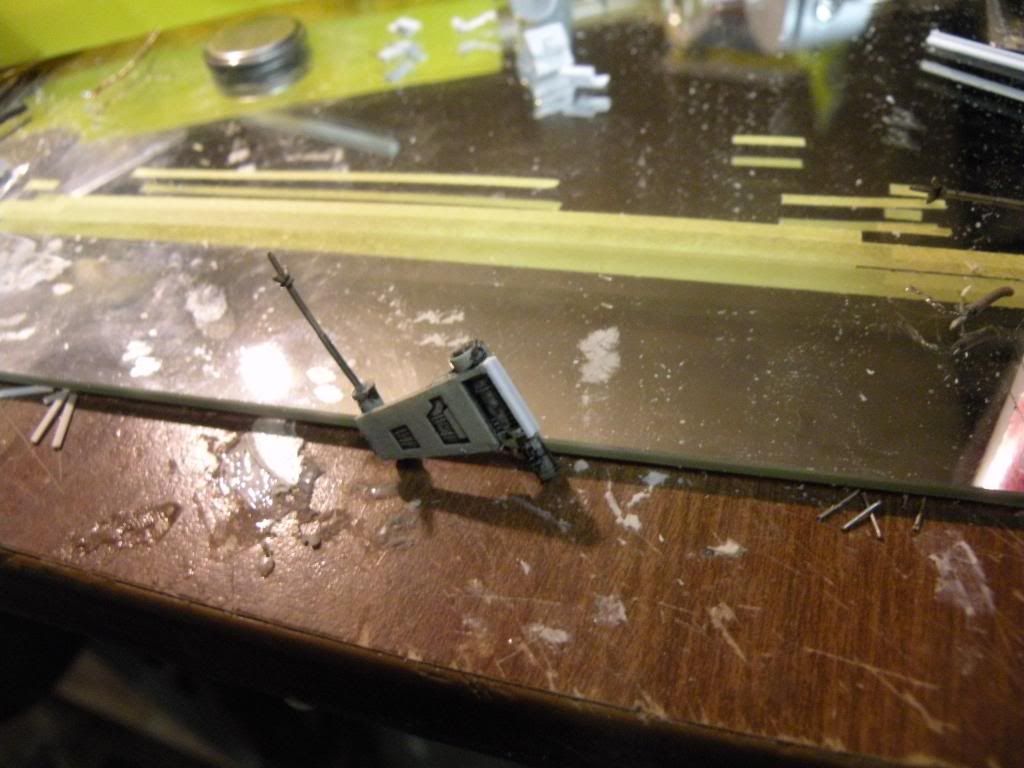
When all four wings had their sockets glued on, I gave them about ten minutes to cure, then started gluing them to the hinge. First I glued the top wings on, making sure they were completely level when the hinge was closed: http://i60.photobucket.com/albums/h4/Millennium_Falsehood/Articulated%20X-wing%20miniature/DSCN5751_zps031699fb.jpg
Finally, I glued the lower wings in place, and then this little beauty was finished:
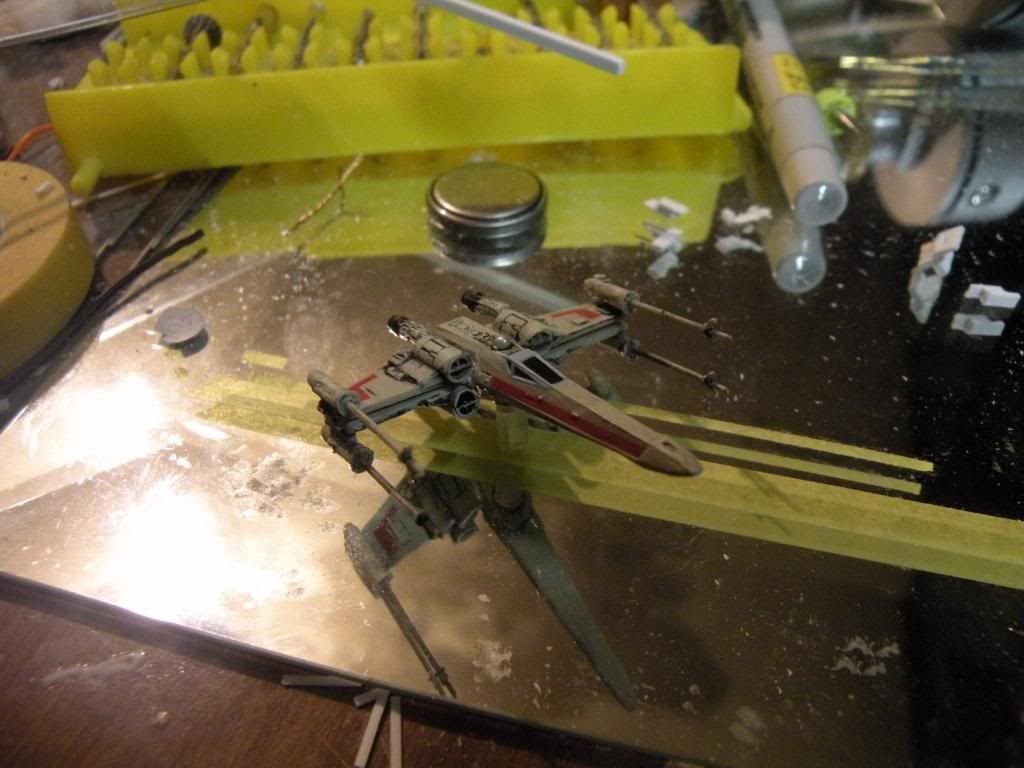
Pretty nifty, eh?
![]()
Here she is next to an unmodified X-wing, demonstrating her articulated wings:
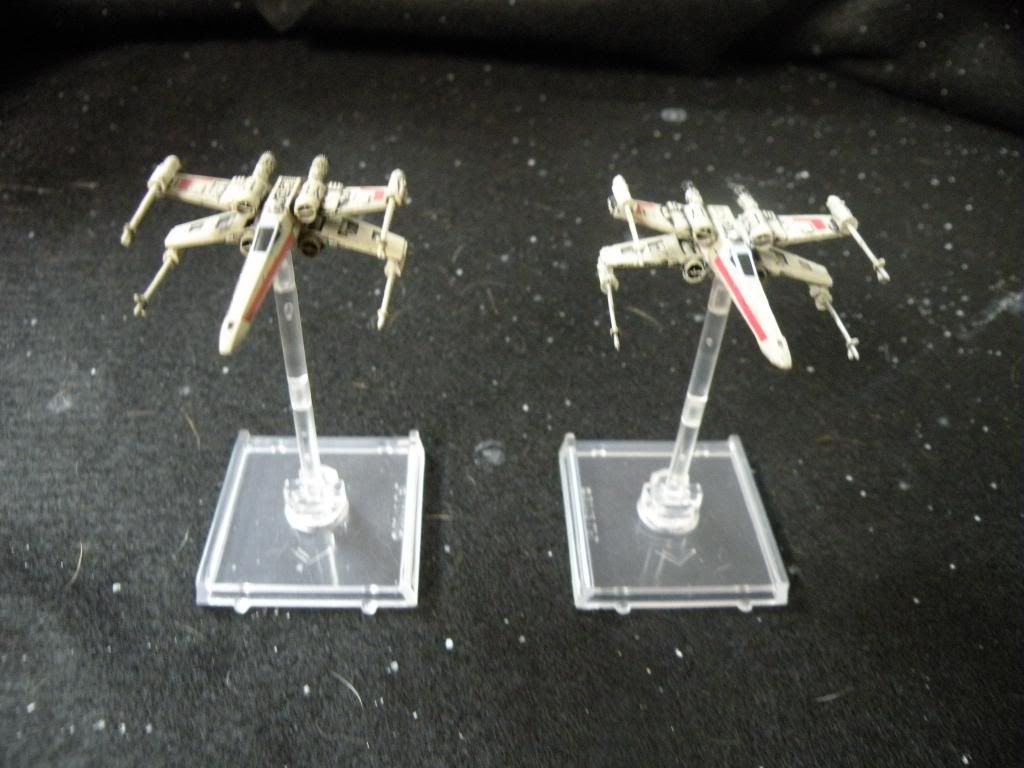

Before anyone asks, I don't think I'll be doing a B-wing any time soon. Their wings are extremely thin, and I don't know if I can get away with a hinge that tiny. Maybe if I built it out of brass tube or something . . .
Anyway, I really enjoyed building this little beauty. I'm thinking about doing a couple more of them so I can have a trio of articulated X-wings.
![]()
